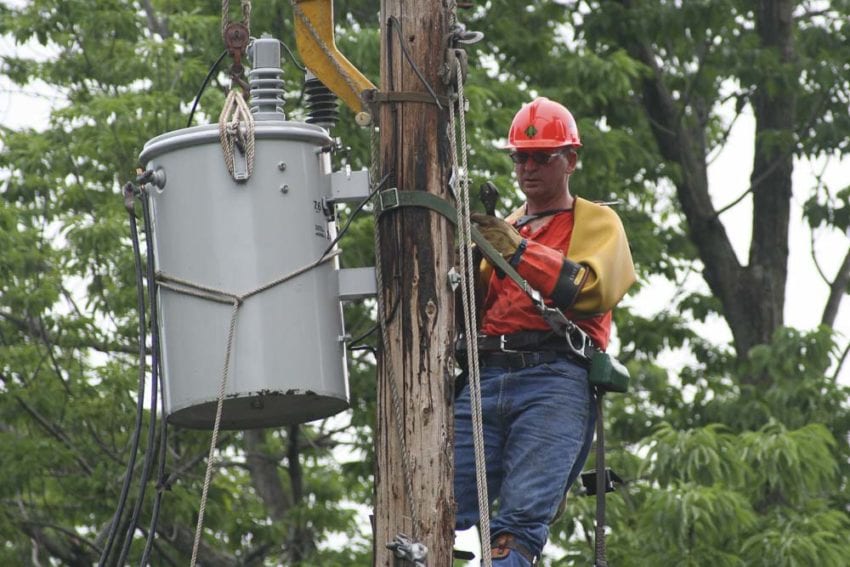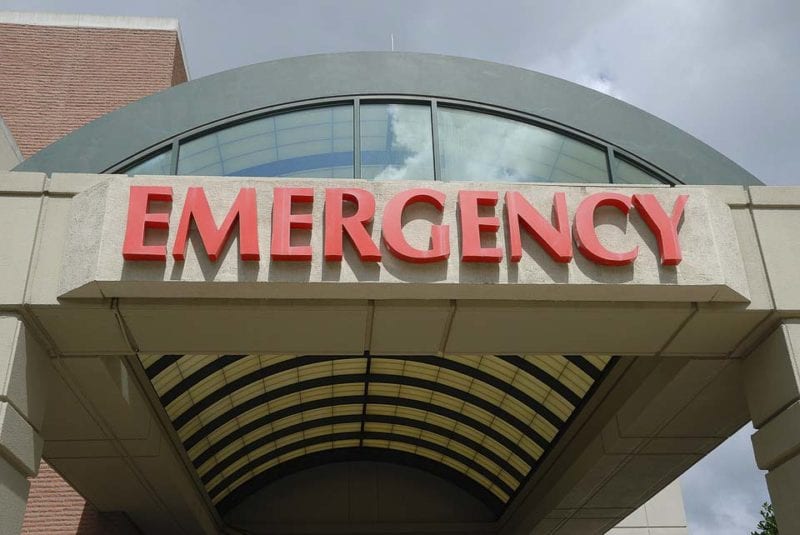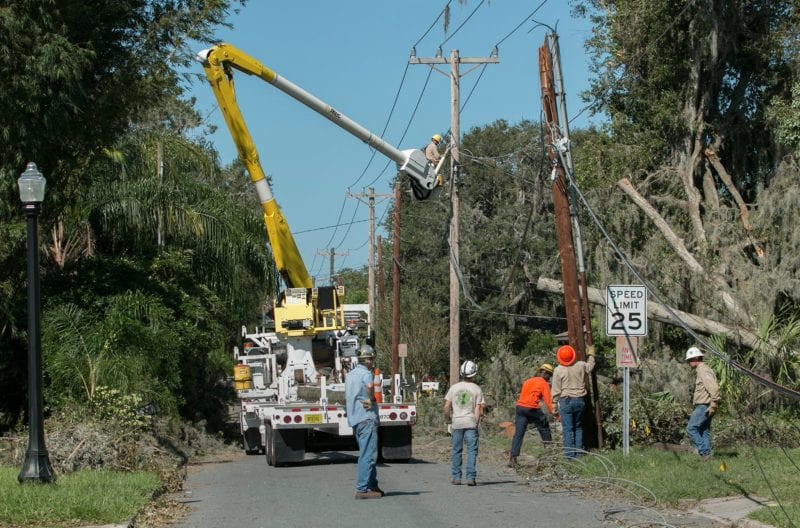When a major storm hits, widespread power outages are a given. Back in 2017, Hurricane Irma scored a direct path through our city. Afterward, we got a close look at how power gets restored after a storm. As it turns out, we have some very smart professionals who manage, operate, and repair our local electrical grid. The time it took to get people back up varied from just a few hours to several weeks in some areas. Everyone wants to know when they’ll get power back, but the key is understanding how the system prioritizes repairs. This article fills in the gaps, telling you how the electric company restores power after a storm.
The government actually uses a very intentional process for getting power back up and running.
Quick Article Summary
- Assessment
- Power stations and facilities
- Critical installations
- Customer restoration (prioritized by efficiency and need)
How the Electric Company Restores Power After a Storm
Step 1: Assessment
Start any project without good planning, and you’ll run into issues. Start a major power restoration project without a plan, and you’ll wind up with a very inefficient and even more costly process.
The first people you’ll see from the utility company will be assessing damage and reporting back to the planning team. This allows on-site crews to have an idea of what’s down and how to best prioritize repairs. When Hurricane Irma hit us in 2017, we saw many such crews driving out and assessing the damage in various areas to establish a “plan of attack”.
Step 2: Power Stations and Facilities
Restoration starts by making repairs to power plants and substations first. If the source of your power isn’t up, it’s awfully tough to know what isn’t working. Once those repairs are complete, facilities like water and wastewater plants become the next priority with transmission line repairs. As the municipality makes these repairs, they systematically protect “downstream” power substations. This keeps them from accidentally getting unexpected power and causing additional damage.
Step 3: Critical Installations
The next priority includes critical areas like hospitals, life support centers, fire stations, and police stations. These facilities typically sit close to major lines by design. This is, of course, where the crew would start anyway. The goal, however, is to get water and wastewater services to these facilities so they can perform critical functions. Critical installations such as hospitals see main line repairs off of the transmission lines first.
Step 4: Customer Restoration
Contrary to popular belief, wealthy areas do not get back up the quickest. It’s all about moving from the major power arteries to minor capillaries. Much of this works in a similar way to how blood flows in our bodies. The closer you are to transmission lines, the more quickly you’re likely to see power restoration.
There are, however, exceptions to this rule. At this point, the power companies prioritize restoring power to the greatest number of people possible—as quickly as possible. In the case of restoring power after Hurricane Irma, my block didn’t get power back as quickly as the surrounding ones. The reason was that there were repairs to make that got more people back online than my little pocket. While frustrating for those of us without power, the work they accomplished quickly impressed everyone paying attention. 48 hours after the storm, we saw electricity restored to 65% of residents. By 72 hours that number climbed to nearly 85%.
Only at this point do the small pocket and isolated areas get the repairs they need. In some cases, these include repairs to a single home connection, reducing the number of customers getting back online to very small figures. One member of our team found his home at the very tail end of a run. His power took nearly two weeks to get repaired—making him one of the last people to regain service in Lakeland.
The Bottom Line of Knowing How the Electric Company Restores Power
There is a method to the seeming madness of how power is restored after a storm. While tons of conspiracy theories abound about “the wealthy” getting power back first, this simply isn’t true. The reality—which we’ve seen first hand—shows that power companies and municipalities typically have a plan in place. This governs how they restore the grid to get the most customers back up the quickest after critical installations.
There’s one thing to remember—and this has been an issue of misinformation after Hurricane Irma. Linemen are out there to restore power, not talk to you about estimates on repair times! Every minute they’re not working on the line is another minute of delay in getting power back up for some other family. They’re not trying to be rude, they’re trying to do their jobs…often working 16-hour days to get you back up.
Our recommendation? Shove a Starbucks gift card in their hand, say thanks, and walk away!





